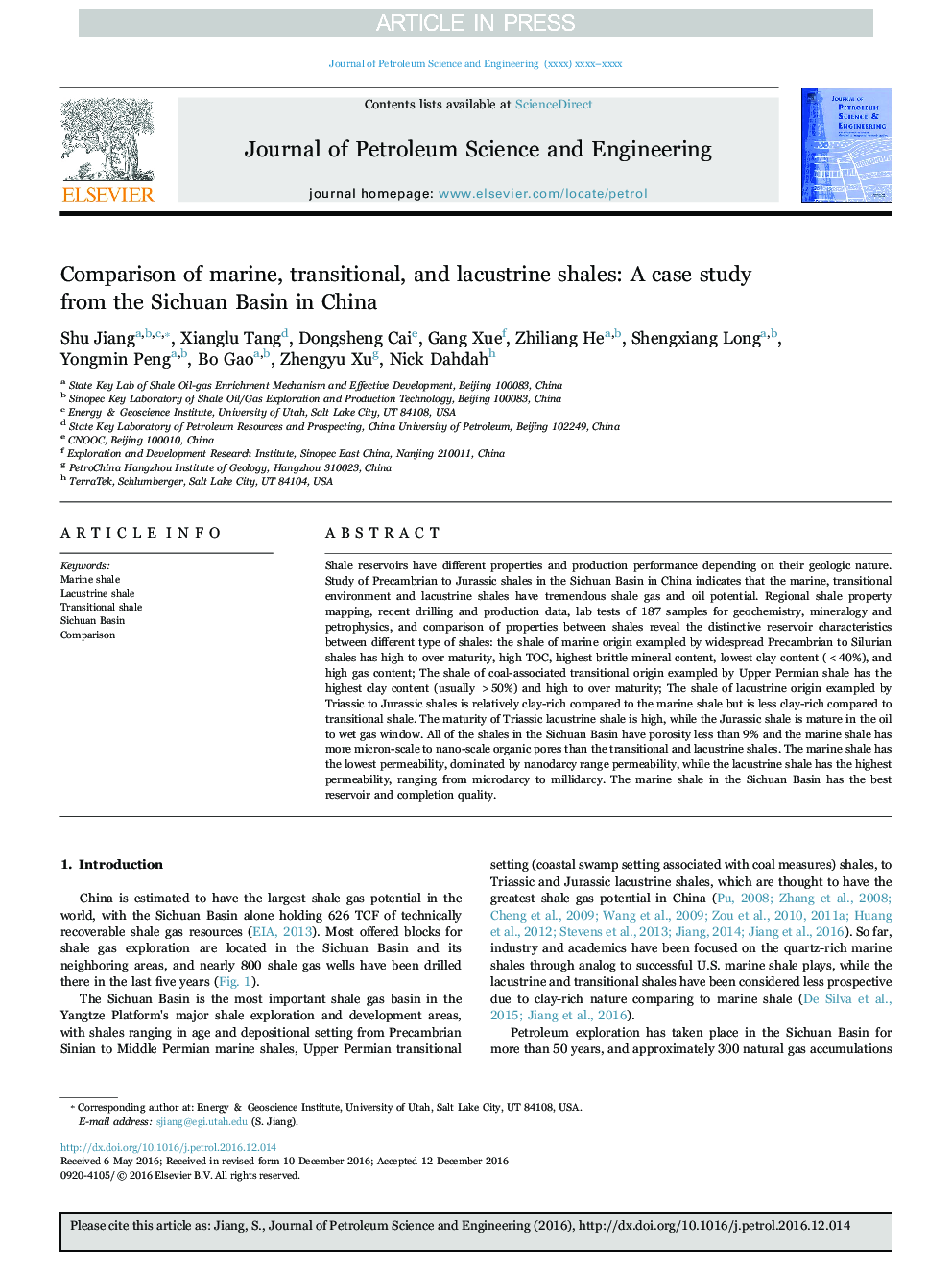| Article ID | Journal | Published Year | Pages | File Type |
|---|---|---|---|---|
| 5484347 | Journal of Petroleum Science and Engineering | 2017 | 14 Pages |
Abstract
Shale reservoirs have different properties and production performance depending on their geologic nature. Study of Precambrian to Jurassic shales in the Sichuan Basin in China indicates that the marine, transitional environment and lacustrine shales have tremendous shale gas and oil potential. Regional shale property mapping, recent drilling and production data, lab tests of 187 samples for geochemistry, mineralogy and petrophysics, and comparison of properties between shales reveal the distinctive reservoir characteristics between different type of shales: the shale of marine origin exampled by widespread Precambrian to Silurian shales has high to over maturity, high TOC, highest brittle mineral content, lowest clay content (<40%), and high gas content; The shale of coal-associated transitional origin exampled by Upper Permian shale has the highest clay content (usually >50%) and high to over maturity; The shale of lacustrine origin exampled by Triassic to Jurassic shales is relatively clay-rich compared to the marine shale but is less clay-rich compared to transitional shale. The maturity of Triassic lacustrine shale is high, while the Jurassic shale is mature in the oil to wet gas window. All of the shales in the Sichuan Basin have porosity less than 9% and the marine shale has more micron-scale to nano-scale organic pores than the transitional and lacustrine shales. The marine shale has the lowest permeability, dominated by nanodarcy range permeability, while the lacustrine shale has the highest permeability, ranging from microdarcy to millidarcy. The marine shale in the Sichuan Basin has the best reservoir and completion quality.
Related Topics
Physical Sciences and Engineering
Earth and Planetary Sciences
Economic Geology
Authors
Shu Jiang, Xianglu Tang, Dongsheng Cai, Gang Xue, Zhiliang He, Shengxiang Long, Yongmin Peng, Bo Gao, Zhengyu Xu, Nick Dahdah,
